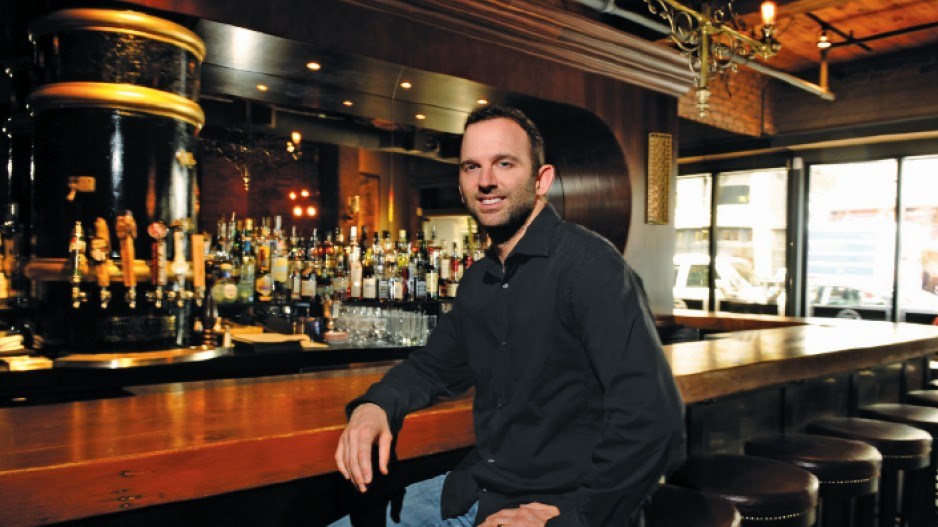The phrase “cutting edge” isn’t often associated with the hospitality industry.
While new hotels and restaurants open all the time, the fundamentals of the business don’t change much over the years; except perhaps when it comes to marketing.
In a bid to attract an affluent, technologically savvy community of business customers, Vancouver restaurants and hotels are combining traditional and new media in innovative ways.
When it comes to marketing, Chuck McIntosh, a partner at Pourhouse Restaurant in Gastown, has taken a “back to the future” approach. Instead of using newspapers, magazines or banner ads to promote his business, he prefers to do his marketing the old-fashioned way: by spending time talking to customers.
“Advertising – we don’t do a whole lot of that,” McIntosh admitted. “A lot of the [marketing] we’ve done has been grassroots – from people coming in and having an unbelievable experience. It kind of spreads.”
McIntosh believes this is a far more effective strategy for building repeat business with existing customers (and new business with their friends and colleagues) than any traditional advertising campaign.
“You can’t put a price on getting out there and talking to people,” he said.
McIntosh then uses new media to leverage this personal contact.
By posting on his website, his blog, or via social media (mostly Twitter and Foursquare) what customers, bloggers, reviewers and food critics are saying about his business, McIntosh can take word-of-mouth marketing to a whole new level.
“It’s kind of word-of-mouth on steroids,” he said. “Everything that comes through, I monitor it online; I have alerts. Whenever that comes up, I check it out. If it’s bad I try to fix it. If it’s good, I promote it.”
When it comes to marketing her hotel’s Tableau Bar Bistro, Lilliana De Cotiis, director of marketing and principal at Loden Hotel, agrees with McIntosh: personal methods are usually better than advertising.
“It’s very much a word-of-mouth industry. Everybody knows that,” she said.
For her hotel, however, De Cotiis uses a mixture of traditional and new media.
“It’s a balance between the two of them,” she said. While the portion of her marketing budget spent in new media has risen steadily, De Cotiis believes traditional media still have a big role to play.
“Would I take one over the other? Absolutely not. I still think some of the [traditional] publications are foundations. They still exist and people still go to them.”
De Cotiis’ strategy is to first build awareness within her target market (executives, senior directors and owner-principals) with traditional ads placed in the business press or online with Google AdWords. She then uses social media to promote packages and deals that appeal to this clientele. The hotel also hosts special events and luncheons for executive assistants, in an effort to influence those who schedule business travel for their bosses.
De Cotiis has been very successful with a number of non-traditional strategies including partnerships with other businesses and charity co-sponsorships.
The hotel is also featured prominently on reality television, with appearances on Real Housewives of Vancouver, The Bachelor Canada, and The Proposal. Such exposure is then posted online via the hotel’s website and social media to create marketing buzz for the property.
Rodney Payne, founder of Think! Social Media applauds such efforts to merge traditional and new media tools. Even so, he believes that rather than bolting on a new media element to a traditional campaign, hospitality businesses may be better served by rethinking their marketing from the ground up.
“Trying to tack [new media] onto old media efforts is usually very difficult,” Payne said.
Part of that rethinking process should be to drop the traditional-versus-new-media debate.
“The biggest mistake people make is focusing on the tools first,” Payne said, adding that whether you should go to market with a print campaign or an activation or a Facebook page is irrelevant if you can’t provide a first-rate customer experience.
“The point isn’t so much to get your message right. The point is to get your product right.”
For those using new media for the first time, Payne suggests a three-step approach.
“The biggest opportunity is to listen first … to what people are saying about you,” he said. “Then to build some relationships through conversation. Once you build some relationships and perhaps a small community of advocates, you can start doing things to engage those people, or asking them for input on your business.”




